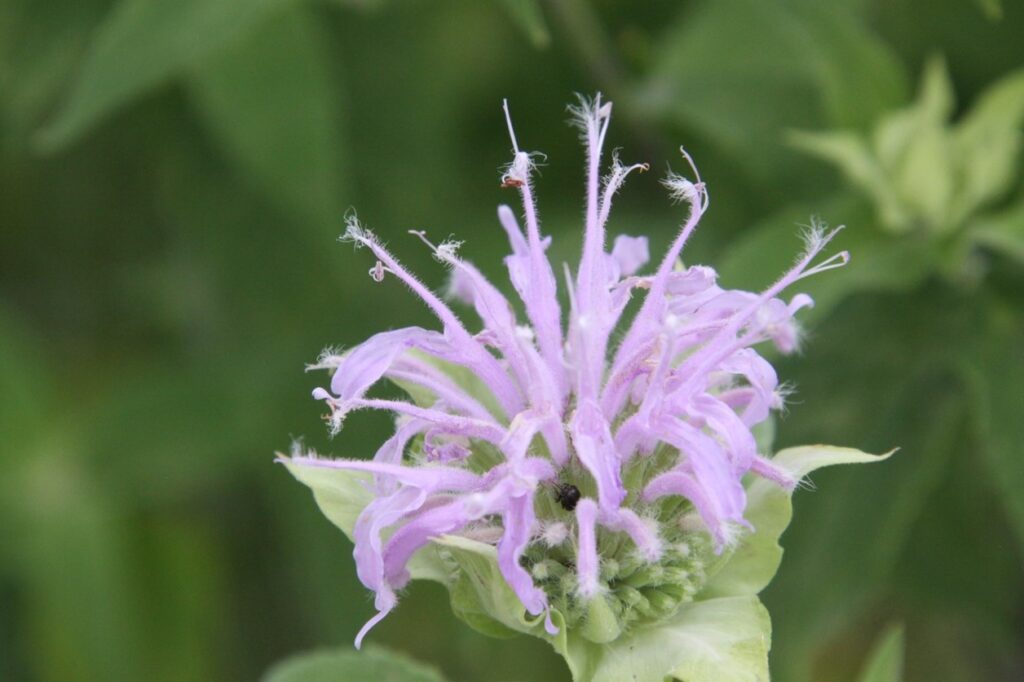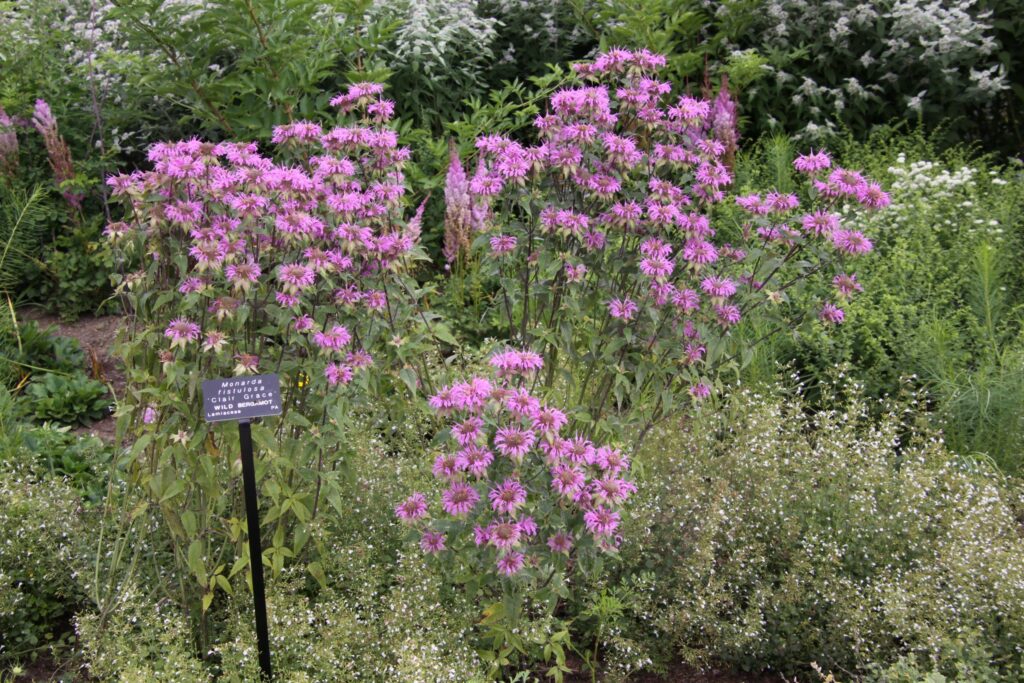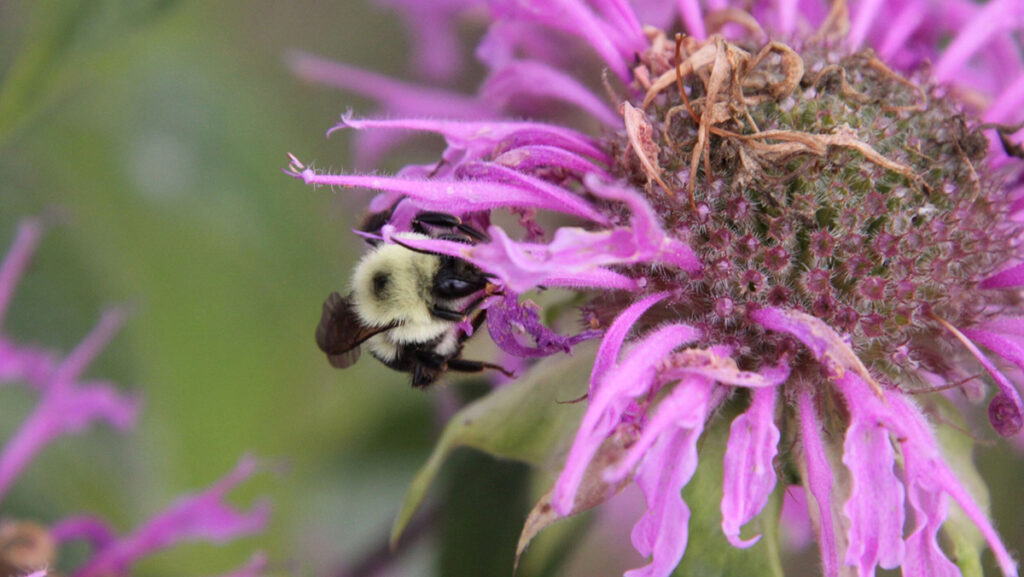
Monarda fistulosa ‘Clair Grace’ (wild bee balm)
From late May into July, one of the most popular and important native wildflowers will be blooming here in our gardens and prairies and along roadsides! Bloom time can extend into the early fall season, depending on the species. Monarda, commonly known as bee balm or wild bergamot, is a perennial garden favorite of the mint family (Lamiaceae), which doubles as a valuable pollinator resource.
Monarda is a genus that is native to North America and includes more than 16 different species. Bee balm has been spread to other continents due to its high pollinator value and pleasant appearance, with several hybrids and hundreds of cultivars now available in the trade. These flowers got the name ‘bee balm’ because of their former medicinal uses, including the treatment of bee stings. The entire plant above the roots is edible, and the petals can be used to make Oswego tea, which is also another common name used for this plant.
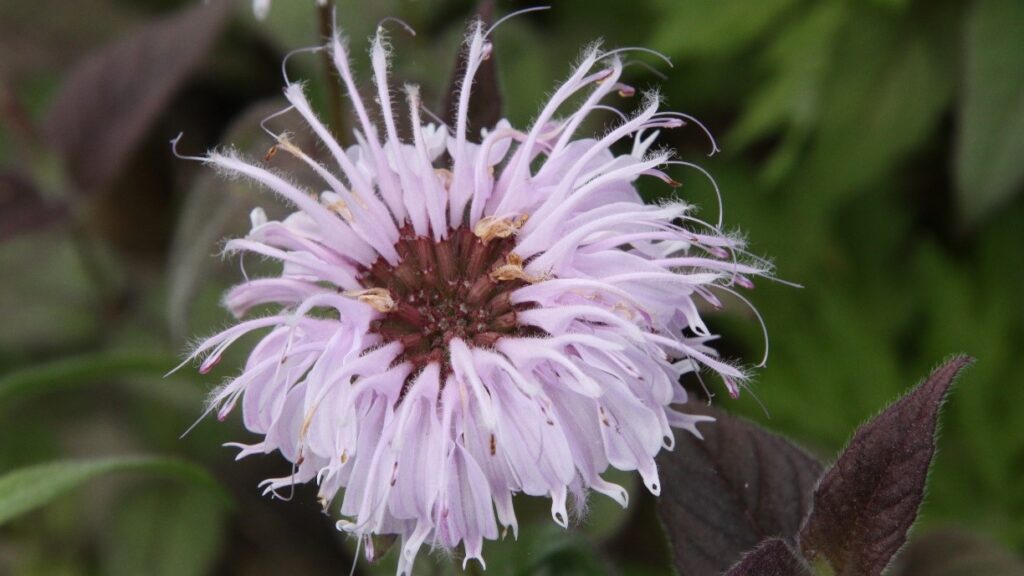
Monarda bradburiana (eastern bee balm)
These plants can grow to be at least two to four feet tall, and their flowers bloom from atop their uniquely shaped stems. The flowers themselves have two layers of dense petals with tubular flowers stretching upward from the top. They vary in flower size and color depending on the cultivar, but are commonly observed in various shades of red, pink, yellow, white, or lavender. Similar to other mints, this plant has paired leaves, a hollow stem, and shallow rhizomes which allow it to spread vegetatively.
Bee balm is largely resistant to deer and rabbit damage and does best in full sun and moist, well-draining soil. These plants will self-seed and spread by rhizomes, which can be lessened by deadheading if a larger spread is undesired in an area. The largest issue to be aware of when growing bee balm is the fungal disease powdery mildew, which manifests as a grayish white powdery substance on leaf surfaces and can cause premature leaf drop. The best way to deter this is to avoid drought stress, remove diseased plant debris, and select a full-sun location with enough room to space plants about two feet apart.
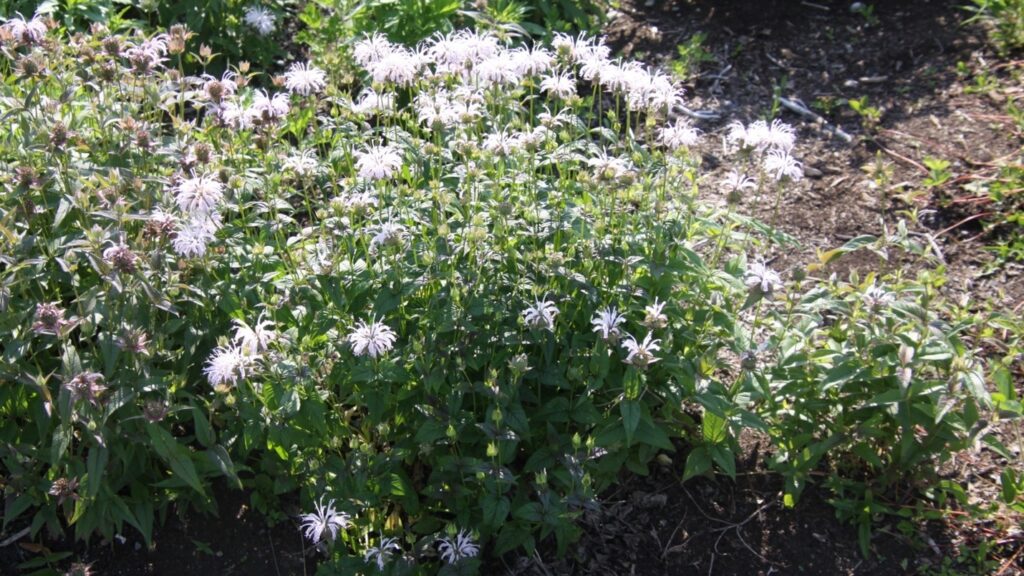
Monarda bradburiana (eastern bee balm)
Here at the Arboretum, there are six different species of Monarda, mostly found in the Pollinator and Bird Garden. Be on the lookout for more bee balm blooming in the Childhood’s Gate Children’s Garden as well as in the prairie that is part of the Arboretum’s natural lands.
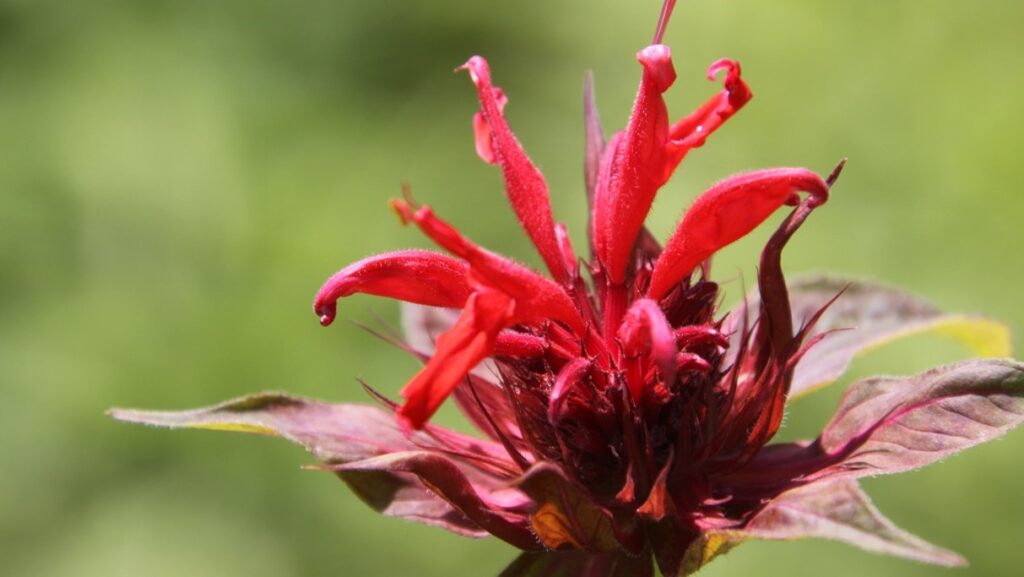
Monarda didyma (scarlet bee balm)
One such species found in the Pollinator and Bird Garden is scarlet bee balm (Monarda didyma), pictured above. This flower is known for its dense floral head with vibrant bright red flowers flowing outward. It is native along mountainous regions of the northeastern United States. A popular variety of this flower is Monarda didyma ‘Raspberry Wine’, which can be found in the children’s garden. As the name implies, it has more of a raspberry color as opposed to the usual scarlet red.
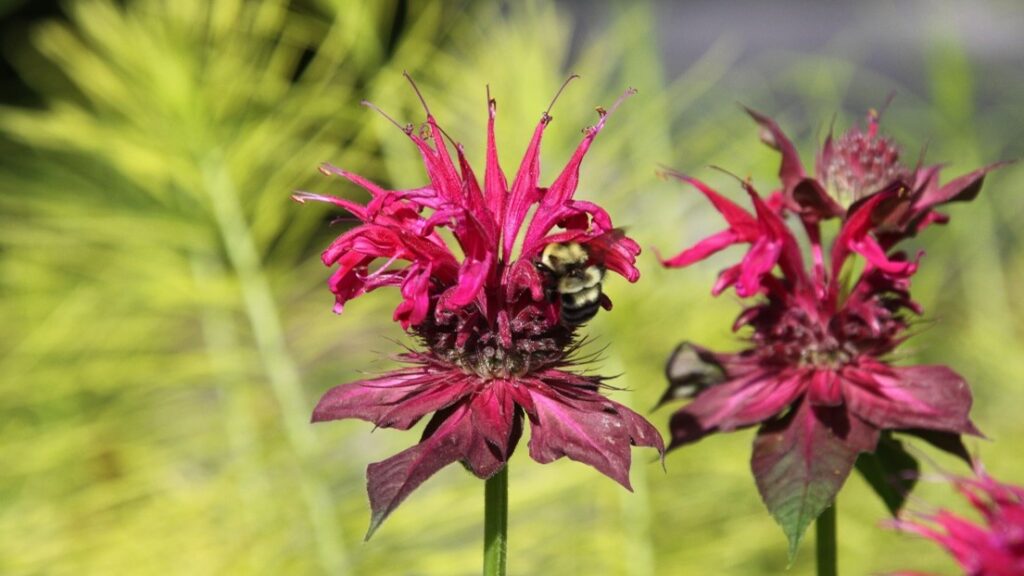
Monarda didyma ‘Raspberry Wine’ (scarlet bee balm)
Another bee balm species found in the Pollinator and Bird Garden is Monarda fistulosa, or wild bee balm, (pictured below). This species has numerous cultivars, including ‘Clair Grace,’ which has been evaluated and praised as a top-performing cultivar by Mt. Cuba Center’s plant trials and can be seen growing in our Pollinator and Bird Garden, with peak blooms in July and August.
- Monarda fistulosa (wild bee balm)
- Monarda fistulosa ‘Clair Grace’ (wild bee balm)
Bee balm is an important flower and a staple for a productive, lively, and colorful landscape all summer long. This plant is beloved by visitors and is also a very important nectar and seed source for various pollinators and birds, including butterflies, bees, ruby-throated hummingbirds, and clearwing hummingbird moths to name a few.
BEE sure to stop into the gardens this summer to take in the sights, smells, and sounds this plant is known for!

Monarda clinopodia (white bee balm)

